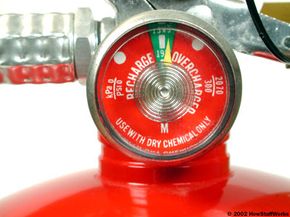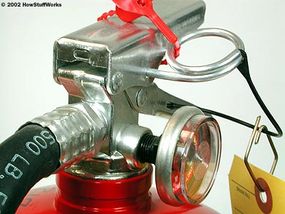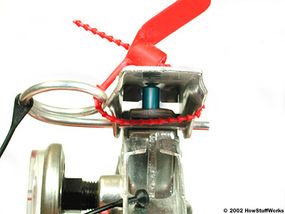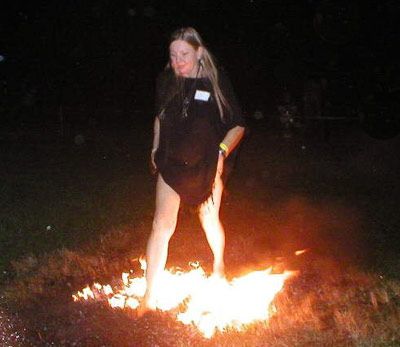There are a few different types of fire extinguisher, classified by extinguishing agent. Learn about their features to choose the right fire extinguisher to keep your family safe.
Water Extinguisher
Water is the most familiar extinguishing material, and it is one of the most effective. But it can be dangerous in the wrong situation. A water extinguisher can put out things like burning wood, paper or cardboard, but it does not work well on electrical fires or fires involving inflammable liquids.
In an electrical fire, the water may conduct the current, which can electrocute you. Water will only spread out an inflammable liquid, which will most likely make the fire worse.
Carbon Dioxide Extinguisher
One popular extinguisher material is pure carbon dioxide. In a carbon dioxide extinguisher, the carbon dioxide is kept in pressurized liquid form in the cylinder. When the container is opened, the carbon dioxide expands to form a gas in the atmosphere.
Carbon dioxide gas is heavier than oxygen, so it displaces the oxygen surrounding the burning fuel. This sort of fire extinguisher is common in restaurants because it won't contaminate the cooking equipment or food in kitchen fires.
The plastic discharge horn on the end of a carbon dioxide extinguisher can get very cold, so don't touch it.
Dry Chemical Extinguisher
The most popular extinguisher material is dry chemical foam or powder, typically made of sodium bicarbonate (normal baking soda), potassium bicarbonate (nearly identical to baking soda) or monoammonium phosphate.
Baking soda starts to decompose at only 158 degrees Fahrenheit (70 degrees Celsius), and when it decomposes, it releases carbon dioxide. The carbon dioxide, along with the insulation of the foam, works to extinguish the fire.
Extinguisher Ratings
Fire extinguishers are rated by the type of fire they can put out.
- Class A extinguishers can put out fires from "ordinary combustibles" such as wood, plastic or paper.
- Class B can put out burning liquids such as gasoline or grease.
- Class C can put out electrical fires. Extinguishers marked A, B and C can put out all types.
- Class D extinguishers, designed to put out burning metal, are rare. Check the letters and pictures on your extinguisher to find out what it can handle.





